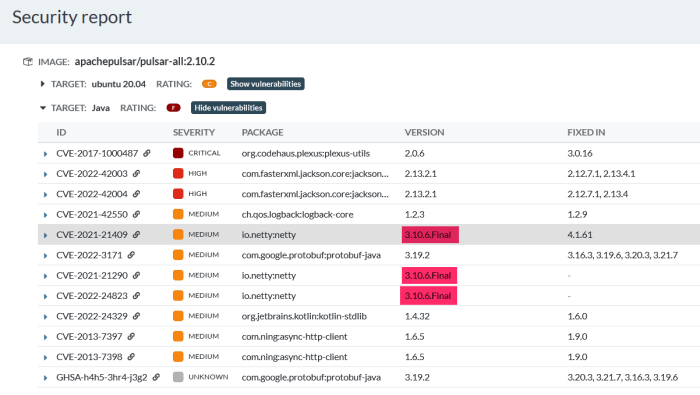How can HTTP status codes tip off a hacker? It’s a question that chills cybersecurity experts to the bone. Think of it: those seemingly innocuous numbers, quietly returned by your web server, could be broadcasting your vulnerabilities to the digital underworld. A seemingly harmless “500 Internal Server Error,” for instance, might inadvertently reveal file paths, database details, or even snippets of your source code—a treasure trove for any malicious actor. This deep dive explores how these digital breadcrumbs can lead hackers straight to your sensitive data, and how to cover your tracks.
We’ll dissect various HTTP status codes, examining how 4xx client errors and 5xx server errors can leak crucial information. We’ll uncover how clever hackers can exploit redirects (3xx codes) and leverage HTTP headers alongside status codes to paint a complete picture of your system’s weaknesses. Prepare for a thrilling journey into the dark art of exploiting HTTP status codes, and learn how to fortify your web applications against these stealthy attacks.
HTTP Status Codes and Information Leakage

Source: slideplayer.com
HTTP status codes, those seemingly innocuous three-digit numbers returned by web servers, can inadvertently reveal a treasure trove of information to a determined attacker. While intended to provide feedback on a request’s success or failure, poorly handled error messages can expose sensitive details about the server’s configuration, internal structure, and even the data it protects. This information, in the wrong hands, can be exploited to compromise security.
These codes are essentially the server’s way of communicating the result of a request. A successful request might return a 200 OK, while failures manifest as various codes indicating problems like 404 Not Found or 500 Internal Server Error. However, the specific details within these responses, particularly error messages, often contain information beyond the basic code itself. This is where the vulnerability lies.
Server Configuration Exposure Through Status Codes
Carelessly configured web servers can leak sensitive information through status codes and accompanying error messages. For instance, a 500 Internal Server Error might include a detailed stack trace, revealing the specific lines of code that caused the error. This can give attackers insights into the server’s software, its internal workings, and potentially expose vulnerabilities in the application logic. Similarly, a 403 Forbidden error, while indicating unauthorized access, might reveal the existence of hidden directories or files, unintentionally providing a roadmap for further exploration. A poorly configured server might even reveal the full file path in the error message, giving the attacker a direct path to potentially sensitive files.
Examples of Vulnerable Status Codes and Their Exploitation
Consider a scenario where a website attempts to access a non-existent image file. A well-configured server would return a simple 404 Not Found message. However, a poorly configured server might return a 404 error that includes the full path to the image file, for example, `/var/www/html/images/secret_document.jpg`. This inadvertently reveals the existence of the file, its location, and potentially its file type, providing a clear target for further attacks. Similarly, a 500 Internal Server Error might reveal a portion of the server’s internal file structure, such as part of a database query or a file path used within the application.
Mapping Website Directory Structure Using Error Messages
Attackers can systematically probe a website by requesting non-existent files or directories. By analyzing the returned HTTP status codes and error messages, they can piece together a map of the website’s directory structure. For example, by requesting `/admin/`, `/admin/login.php`, and `/admin/config.php`, the attacker can determine the existence and potential functionality of an administrative section. A series of 404s might indicate a dead end, while the presence of other codes could suggest the existence of further directories or files. This systematic approach can help attackers identify potentially vulnerable areas of the website.
Scenario: Sensitive Data Exposure Through a Specific Status Code
Imagine an e-commerce website that handles sensitive customer data. Suppose a poorly coded function responsible for retrieving order details returns a 500 Internal Server Error when an invalid order ID is provided. Instead of a generic error message, the server reveals the SQL query used to fetch the order details, including the database table name and the specific columns containing sensitive customer information like credit card numbers or addresses. This leak, combined with other information gathered through directory mapping or other techniques, could allow an attacker to directly access this sensitive data.
Exploiting Specific Status Codes
HTTP status codes, those seemingly innocuous three-digit numbers returned by web servers, can inadvertently reveal sensitive information to attackers. Understanding how these codes work and what information they might leak is crucial for building secure web applications. A seemingly harmless response can be a treasure trove for a determined hacker. Let’s dive into how specific codes can be exploited.
Different status codes expose varying levels of information. While some simply indicate a successful request, others can unintentionally reveal directory structures, file existence, or even internal server errors. This information can then be used to further probe the system, potentially leading to a full-blown breach. Understanding the implications of each code is paramount to securing your web application.
Specific Status Code Vulnerabilities
The following table details specific HTTP status codes and their associated vulnerabilities. Each example illustrates how a malicious actor might leverage the information leaked to compromise a system.
| Status Code | Description | Potential Vulnerability | Exploitation Example |
|---|---|---|---|
| 403 Forbidden | Access to the requested resource is forbidden. | Reveals the existence of a resource, even if access is denied. This can be used for directory traversal attacks. | An attacker might try various URLs to map out the website’s structure. A 403 response for `/admin/panel` confirms the existence of an admin panel, even if the attacker can’t access it directly. This could be a starting point for further attacks. |
| 404 Not Found | The requested resource could not be found. | While seemingly benign, a carefully crafted 404 response might reveal internal file paths or directory structures if the error message is not properly sanitized. | A request for `/secret/config.php` returns a 404, but the error message might include part of the file path, indirectly revealing the existence of the `secret` directory. |
| 500 Internal Server Error | A generic server error occurred. | Can leak sensitive information about the server’s internal configuration or code, especially if the error message includes stack traces or debugging information. | A poorly configured server might return a 500 error with a detailed stack trace, revealing the internal workings of the application and potentially exposing vulnerabilities. |
| 301 Moved Permanently | The requested resource has permanently moved to a new location. | If not properly handled, redirects can be used for phishing attacks or to redirect users to malicious websites. | An attacker could create a malicious website mimicking a legitimate one and then configure the legitimate site to redirect to the malicious site using a 301 redirect. |
Information Leakage Potential of 4xx and 5xx Status Codes
4xx (client error) and 5xx (server error) codes differ significantly in their information leakage potential. 4xx codes often reveal information about the client’s request, such as incorrect URLs or insufficient permissions. 5xx codes, on the other hand, can expose details about the server’s internal state, potentially revealing vulnerabilities or sensitive information in error messages. While both can leak information, 5xx errors are generally more dangerous as they provide insights into the server’s internal workings.
Exploiting Redirect (3xx) Status Codes
3xx status codes, which indicate redirects, present unique security risks. Attackers can exploit redirects to perform phishing attacks, redirect users to malicious websites, or conduct session hijacking. A malicious redirect could trick users into entering their credentials on a fake login page, or it could redirect users to a site containing malware. Properly configured redirects, using HTTPS and verifying the target URL, are essential to mitigate these risks.
Common Misconfigurations Leading to Insecure HTTP Status Code Responses
Several common misconfigurations can lead to insecure HTTP status code responses. These include:
- Insufficient error handling: Failing to handle errors gracefully can result in the server returning detailed error messages revealing sensitive information.
- Lack of input validation: Improperly validated input can lead to unexpected behavior and potentially expose sensitive information through status codes.
- Improperly configured redirects: Redirects not using HTTPS or failing to verify the target URL can be exploited for phishing or other malicious activities.
- Verbose error messages: Detailed error messages can reveal sensitive information about the server’s configuration or codebase.
HTTP Headers and Status Codes

Source: shutterstock.com
HTTP status codes are like cryptic messages sent by a web server. While they reveal the outcome of a request, they’re often just the tip of the iceberg. A savvy hacker doesn’t just look at the code; they examine the accompanying HTTP headers for a richer, more revealing picture of the server’s internal workings and potential vulnerabilities. This combination can unlock a treasure trove of exploitable information, transforming a seemingly innocuous status code into a potent weapon in an attacker’s arsenal.
HTTP headers provide metadata about the request and response, offering details that a status code alone cannot. This supplementary information, when correlated with the status code, can paint a far more detailed picture of the server’s configuration and its weaknesses. For example, a seemingly harmless “200 OK” response might be accompanied by headers revealing the server’s version, underlying technologies, or even the paths to sensitive files. This is where the real danger lies.
Header and Status Code Combinations Revealing Vulnerabilities
Understanding how specific HTTP headers, in conjunction with particular status codes, can expose vulnerabilities is crucial. The following demonstrates how this combination can be exploited. Imagine a scenario where a hacker attempts to access a restricted file. The server returns a “403 Forbidden” status code, seemingly thwarting the attempt. However, a closer look at the headers might reveal the file’s actual location through the “Server” header (revealing the server type and version), or potentially through the “X-Powered-By” header (indicating the framework used, which could contain known vulnerabilities). This information, even without direct access, allows the hacker to research known exploits for that specific server type and framework, significantly increasing their chances of compromising the system.
Potentially Revealing HTTP Headers
Several HTTP headers, when combined with certain status codes, can be particularly revealing. The context of the status code is critical here. For instance:
- Server: Reveals the web server software (e.g., Apache, Nginx). Combined with a 404 (Not Found) error, it can help the hacker identify the server type and potential vulnerabilities associated with that specific version.
- X-Powered-By: Indicates the web application framework (e.g., Django, Ruby on Rails). A “500 Internal Server Error” along with this header can reveal the framework, potentially leading to the discovery of known vulnerabilities within that framework.
- X-AspNet-Version: Specific to ASP.NET applications. A “403 Forbidden” combined with this header provides the ASP.NET version, allowing for targeted attacks based on known vulnerabilities in that specific version.
- Content-Type: Indicates the type of content being returned. If a “200 OK” returns a “Content-Type: text/plain” but the expected content is JSON, it could suggest a misconfiguration or vulnerability in content handling.
- Location: Used in redirects (3xx status codes). A manipulated “Location” header in a redirect could lead to a malicious site.
Exploiting Header Information After Observing a Status Code
Let’s consider a real-world example: A hacker receives a “404 Not Found” response while trying to access `/admin/`. However, the “Server” header reveals it’s an Apache server version 2.2.15, a known vulnerable version. The hacker can now focus their efforts on exploiting vulnerabilities specifically documented for that particular Apache version. This targeted approach significantly increases the probability of success compared to a more general attack. Another scenario: a “500 Internal Server Error” reveals the “X-Powered-By: PHP/5.3.29” header. This immediately points to the potential vulnerabilities associated with that specific PHP version, narrowing the attack surface. The attacker can then leverage this information to scan for and exploit those known vulnerabilities. The combination of the status code and the headers offers a roadmap for a more effective attack.
Mitigation Strategies: How Can Http Status Codes Tip Off A Hacker
Securing web applications against attacks leveraging HTTP status codes requires a multi-layered approach focusing on robust error handling, secure server configuration, and proactive monitoring. By minimizing information leakage and implementing appropriate logging mechanisms, developers can significantly reduce the attack surface and enhance overall application security.
Robust error handling is paramount in preventing information disclosure. Generic error messages should replace detailed error messages that might reveal sensitive information about the application’s internal structure or data. This includes avoiding the direct display of stack traces, file paths, or database error codes.
Secure Error Handling Mechanisms
Implementing custom error pages that provide only essential information, such as “An error occurred,” is crucial. These pages should be consistent across the application, avoiding variations that might inadvertently leak information. For example, a 404 error should not reveal whether a file exists but is inaccessible, versus the file simply not existing. Internally, detailed logging should capture the specifics of the error for debugging purposes, but this should be isolated from the information presented to the user. This separation prevents attackers from gaining insight into the application’s internal workings through error messages. Consider using a centralized logging system that allows for easier analysis and correlation of error events. A robust logging system can also help identify patterns of unusual errors that may indicate a security breach.
Secure Web Server Configuration
A secure web server configuration plays a vital role in minimizing the risk of information leakage. This involves disabling or customizing features that could unintentionally reveal sensitive data. For instance, detailed error messages are often enabled by default on many web servers. These settings should be reviewed and modified to display only generic error messages. Additionally, consider using a web application firewall (WAF) to filter and block malicious requests that attempt to exploit HTTP status codes. A WAF can provide an additional layer of defense by inspecting incoming requests and responses, identifying and blocking potentially harmful patterns. Regularly updating the server software and its associated security patches is also essential to mitigate vulnerabilities that could be exploited.
Logging and Monitoring HTTP Status Codes
Proactive logging and monitoring of HTTP status codes are essential for detecting and responding to potential security breaches. Detailed logs should record all HTTP requests and their corresponding status codes, timestamps, and other relevant information, such as the user’s IP address and the requested URL. These logs should be centrally managed and regularly analyzed to identify unusual patterns or spikes in specific error codes. For example, a sudden increase in 404 errors might indicate a denial-of-service attack or a malicious attempt to enumerate files or directories. Implementing automated alerts for significant deviations from established baselines can help ensure prompt identification and mitigation of security incidents. Consider using security information and event management (SIEM) systems to correlate logs from multiple sources and identify potential threats. This centralized view of security events provides a comprehensive understanding of the application’s security posture.
Case Studies of Exploited Status Codes

Source: gcore.pro
HTTP status codes, while seemingly innocuous, can inadvertently reveal sensitive information about a web application, creating vulnerabilities that savvy attackers can exploit. Understanding how these codes are misused is crucial for bolstering online security. This section delves into real-world and hypothetical scenarios demonstrating how seemingly benign status codes can be weaponized.
Real-World Example of Status Code Exploitation
A large e-commerce platform experienced a data breach after attackers leveraged the “404 Not Found” response. By systematically submitting requests for non-existent resources with carefully crafted parameters, they were able to map the internal file structure of the website. This allowed them to identify sensitive files, including configuration files containing database credentials, leading to a significant data breach. The attackers used automated tools to analyze the variations in response times for different 404 errors, deducing the existence and location of hidden directories and files. This meticulous approach allowed them to bypass standard security measures.
Fictional Case Study: Unauthorized Access via Status Code Manipulation, How can http status codes tip off a hacker
Imagine a fictional social media platform, “ConnectVerse.” An attacker discovers that the platform’s user profile page returns a “200 OK” status code for valid users and a “403 Forbidden” status code for invalid or non-existent usernames. However, the attacker notices a subtle difference: If a user profile exists but the user has deactivated their account, ConnectVerse returns a “410 Gone” status code. The attacker creates a script that systematically iterates through a range of usernames, checking for the “410 Gone” response. This allows them to identify deactivated accounts, and by correlating this information with publicly available data, they can infer potentially sensitive information about the users, such as their real names or locations, effectively bypassing the platform’s security measures designed to protect inactive accounts.
Real-World Vulnerabilities Related to HTTP Status Code Handling
The improper handling of HTTP status codes can lead to several vulnerabilities. These vulnerabilities often stem from the way applications generate and respond to these codes. Understanding these vulnerabilities is key to preventing exploitation.
- Information Leakage through Error Messages: Detailed error messages revealing internal file paths, database queries, or other sensitive information in responses like 500 Internal Server Error.
- Predictable Response Codes: Applications returning predictable status codes based on user input (e.g., consistently returning a 404 for incorrect passwords, revealing account existence).
- Lack of Robust Error Handling: Insufficient error handling that allows attackers to gain insight into the application’s logic and potentially bypass security controls.
- Inconsistent Status Code Usage: Inconsistencies in the use of status codes can confuse attackers, but more importantly, can introduce vulnerabilities that attackers might exploit.
Impact of Exploited Status Codes
The consequences of exploiting HTTP status codes can be severe. Data breaches, unauthorized access, account takeovers, and reputational damage are all potential outcomes. The financial and legal ramifications for organizations can be substantial, potentially leading to hefty fines and loss of customer trust. In the case of critical infrastructure or government systems, the impact could be even more far-reaching, potentially compromising national security.
Closing Notes
So, the next time you see an HTTP status code, don’t just dismiss it as a technicality. Remember, those seemingly innocuous numbers can be a goldmine for hackers. By understanding how these codes can leak information and implementing robust error handling and secure server configurations, you can significantly reduce your attack surface. It’s not about eliminating all errors, but about controlling the narrative—and preventing those cryptic error messages from revealing your secrets. Stay vigilant, stay secure.



